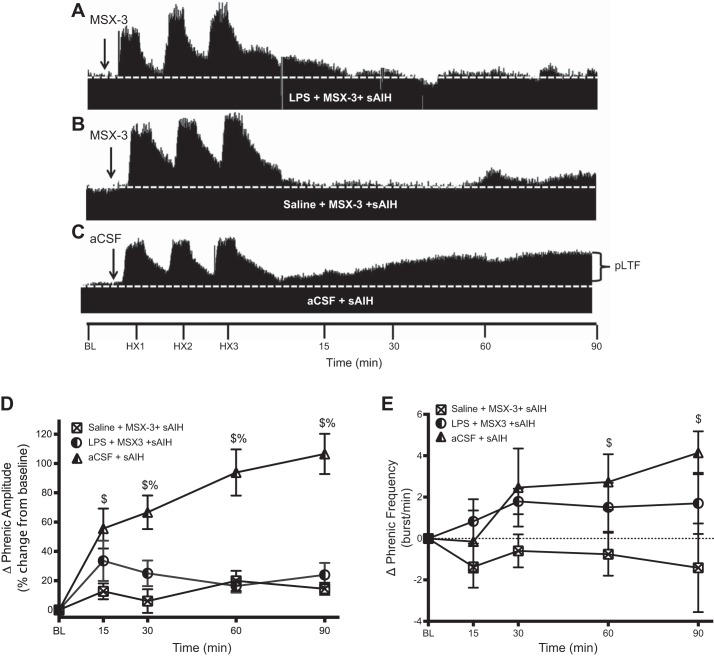Fig. 4.
pLTF following sAIH remains A2A receptor dependent following LPS. A–C: representative traces of compressed integrated phrenic neurograms. A: LPS treatment + intrathecal MSX-3 + sAIH (5 min after MSX-3 administration); there was no increase in amplitude vs. BL. B: saline treatment + intrathecal MSX-3 + sAIH (5 min after MSX-3 administration); there was no increase in amplitude vs. BL. C: MSX-3 vehicle intrathecal administration (20% DMSO, 80% aCSF) and sAIH (5 min after vehicle administration); there was a marked increase in amplitude from BL. D: group data for phrenic amplitude as a %change from BL. LPS + MSX-3 + sAIH (circles; n = 6) and saline + MSX-3 + sAIH (squares; n = 7) are compared with aCSF + sAIH (triangles; n = 7). After sAIH, burst amplitude was increased from BL, but the increase did not persist after 30 min; there were significant differences for aCSF + sAIH vs. LPS + MSX-3 + sAIH (%P < 0.05) and saline + MSX-3 + sAIH ($P < 0.05) at 30, 60, and 90 min post-sAIH. There was no significant difference between LPS + MSX-3 + sAIH and saline + MSX-3 + sAIH at any time. E: group data for phrenic burst frequency (bursts/min). LPS + MSX-3 + sAIH and saline + MSX-3 + sAIH are compared with aCSF + sAIH. There were significant differences for aCSF + sAIH vs. saline + MSX-3 + sAIH ($P < 0.05) at 60 and 90 min.

